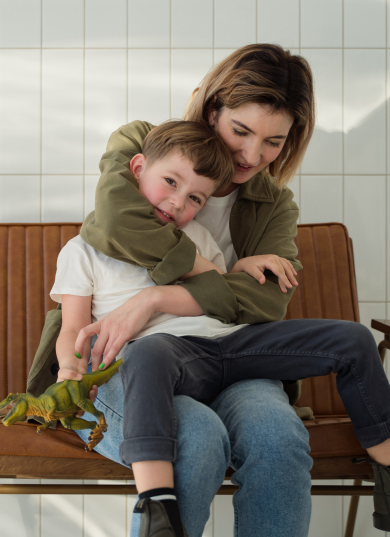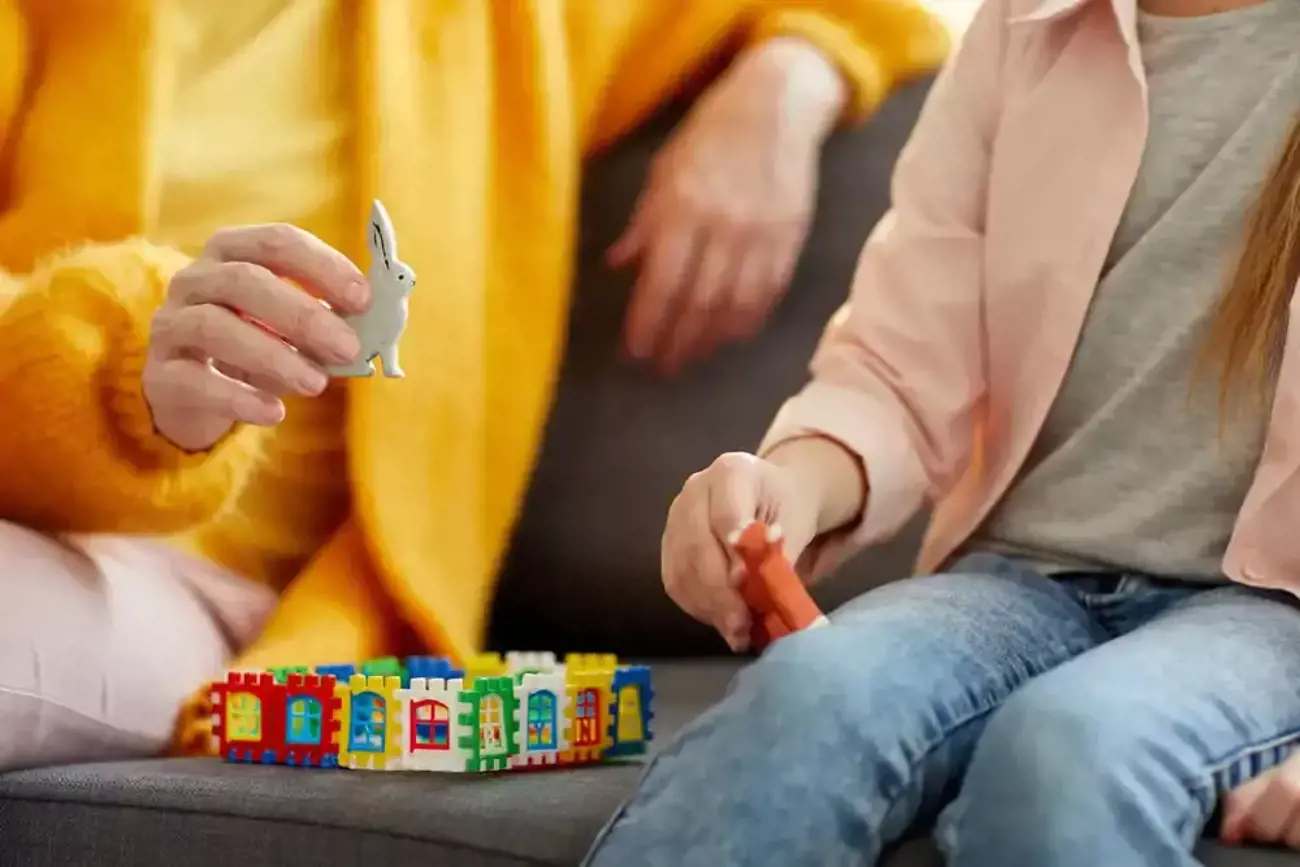When you welcome a nanny into your house, many benefits come with them.
Quality nannies are screened professionals who provide individualised, in-home child care. They help parents balance work and family, form special connections with children, follow familiar routines, and can lessen a youngster’s exposure to illness, compared with centre-based care.
And although COVID-19 has changed the way families share their space, we’re pleased to report that nanny care is still a safe and healthy option for parents, children and carers themselves.
To dispel any concerns you might have about inviting a nanny into your home, we spoke with Felicity Gray, Director of Abracadabra Childcare Services.
Thanks for your time, Felicity. COVID-19 has changed the way many people work, with home offices springing up everywhere and staff being stood down in some sectors. In light of this, are nannies allowed to work while COVID-19 is a problem around the world?
Yes, definitely. Nannies are considered to be In-home Carers, which are listed as essential workers falling under Health Care and Primary Care, so they are able to work during the COVID-19 pandemic.
At Abracadabra, we’re staying up-to-date with the in-home care rules, and monitoring any changes or new requirements through Government websites. The Department of Health and Safe Work Australia sites provide current information, and the Department’s Fact Sheet For In-home Care Workers and Guide for Home Care Providers detail ways to deliver normal, yet precautionary, in-home care at this time.
What new practices have you implemented to help nannies keep children safe from COVID-19?
For starters, we are having all our carers complete a COVID-19 Screening Alert Staff Questionnaire before accepting any in-home child care support role.
We are also having our carers complete the Department of Health’s COVID-19 Infection Control Training session, which:
- Explains what COVID-19 is;
- Lists the signs and symptoms carers should look for;
- Details how carers can protect themselves and those in their care; and
- Dispels myths around the respiratory disease.
This 30 minute session is open to everyone, so parents can complete the training if they wish, and see what practices our nannies are following.
Although the risk of COVID-19 infection is low for most families at the moment, Abracadabra’s in-home carers are also taking robust measures to help protect children from illness.
While working in the family home, our nannies are:
- Using excellent handwashing hygiene and cough/sneeze etiquette;
- Keeping high-touch surfaces clean and hygienic;
- Avoiding close contact with people who have cold/flu-like symptoms;
- Wearing a face mask if necessary; and
- Staying home from their nanny job if they feel ill.
In the unlikely event of a carer who has travelled to an area affected by the disease, come into close contact with a COVID-infected person or has symptoms themselves, then they cannot work for us at this time. Instead, they’re advised to see a doctor and self-isolate for 14 days.
Many families kept their children home from centre-based care in response to COVID-19, and schools were closed for the majority of students. Have you seen an increase in the use of nannies as a result of this?
The majority of enquiries and placements we’ve made over the past month or so have been for live-in nannies.
We have found, though, that some families and nannies have been cautious around social distancing and home isolation. Although we’ve received enquiries, it would appear that parents are preferring to look after their children themselves, and nannies are cautious about taking in-home care roles where there’s a perceived risk of getting COVID-19. However, these concerns have now decreased due to the number of cases dropping and some of the restrictions being lifted, so families and carers are now feeling more confident about working with each other.
We are doing everything we can to ensure that our clients and carers are safe, by providing them with information and reassuring them that the risk of COVID-19 is low if they follow the suggested health and hygiene practices.
We have also been working on a new Virtual Babysitting service which allows families to hire a professional carer to engage with children digitally for a short period of time. This frees up parents to do a bit of work, safe in the knowledge that youngsters are being entertained and engaged by a child care expert.
Should a nanny work for one family only until COVID-19 is completely eradicated?
No, not at all. Families can still ‘share’ their nanny with another family, as long as we keep in line with the suggested ratios for in-home child care.
Nanny share is a cost-effective way to engage a nanny, and although it can involve a nanny working part-time at each family’s house, at the moment, this kind of care would take place in one of the families’ homes to reduce the risk of transferring illness.
There’s no one-size-fits-all solution to child care, so in your experience, what are some different nanny arrangements that work well for families?
There’s plenty of flexibility with nanny care, and the kind of nanny a family uses will depend on factors like the age of the child, the parents’ workload and cost considerations.
Live-out nannies are an excellent child care option for infants, toddlers, preschoolers and school kids. For instance:
- From birth to six-months-old, it’s helpful for new mums to hire nannies/mother's helpers to get support with their baby and some respite.
- From six months to three years, families often choose in-home care to limit their child’s exposure to infections and viruses in centre-based care – especially when it’s not feasible for the parents to take recurring time off work with their sick child.
- From three to five years, families often like to place their children in centre-based care on a part-time basis and employ a nanny/in-home carer for the remaining weekdays.
- For ages five and over, there’s a big demand for before and after school care provided by nannies. Parents like having a carer come to the family home to carry out household duties, collect the children from school, prepare meals, take children to extracurricular activities and help with homework/projects.
Live-in nannies are the more cost-effective option for families who have the space and inclination to accommodate a nanny.
In this case, the carer’s weekly allowance is subsidised to include rent, food, utility bills, WiFi etc. and parents can use the nanny for outside of normal hours care. This works well for fly-in fly-out employees, shift workers and families requiring child care overnight.
Share nannies are also a cost-effective option because they involve two or three families (depending on the number of children) sharing the cost of employing a nanny. In practice, the nanny can work for each family at a different time, or care for all sets of children at once – COVID-19 permitting.
What government funding is available for in-home care?
Nannies can attract the Child Care Subsidy if they’re a ‘registered provider’ and the government also recognises the importance of in-home care to families who can’t access other types of child care because of their circumstances. They understand that families in regional and remote areas, shift workers or those who have a child with complex needs should be supported.
As such:
- The In Home Care program offers up to 3,200 In Home Care places for eligible families who can’t use other types of approved child care;
- We currently have in-home child care workers and nannies out on temporary contracts who are employed through our agency with families entitled to NDIS Funding for special needs requirements;
- Community Services Funding is offering respite care to foster and kinship carers through our agency; and
- Our insurance company clients are providing support to families who are entitled to in-home child care through their accident/injury claim.
The government has also offered financial support to some in-home care services affected by the COVID-19 pandemic.
Does this mean that government-funded In Home Care can be used by families whose children can’t go to school or access their usual child care due to COVID-19?
Risk of COVID-19 infection, or a child care service or school closing because of COVID-19, would not by itself be a valid reason to access In Home Care. This is a specific type of care that is targeted to families who meet the eligibility criteria.
What I would like to do is assure families that it’s safe and helpful to have a nanny in your home at this time. Although COVID-19 has raised concerns about health and hygiene, I can assure you that there are lots of nannies on hand to look after children with the highest standard of care.
That’s great to know. Thank you, Felicity.
What is the Care for Kids policy around COVID-19?
All carers associated with CareforKids.com.au must complete the COVID-19 Infection Control Training session. In addition, all our agency partners have pre-screening and a self-declaration process in place which involves answering the following questions:
- Have you recently travelled to an affected geographic area known to local spread of COVID-19 in the last 14 days? Yes / No
- Have you come into close contact with someone who has a confirmed case of COVID-19 diagnosis in the past 14 days? Yes / No
- Do you have a fever (greater than 37.5 C) AND symptoms of lower respiratory illness such as cough, shortness of breath, or difficulty breathing? Yes / No
This questionnaire needs to be signed and dated by the carer and is kept on file.


































